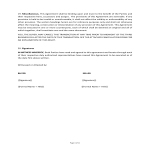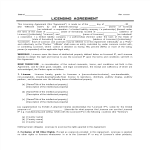Joint Venture Agreement for two parties

I-Save, punan ang mga blanko, i-printa, Tapos na!
What are the steps in creating a joint venture agreement for two parties? What should be included in a joint venture agreement? Download this sample agreement template now which outlines the terms, conditions, and obligations of the parties involved.
Ngayon: USD 1.50
I-download ngayon!

Mga magagamit na premium na format ng file:
.doc- Itong dokumento ay sertipikado ng isang Propesyonal
- 100% pwedeng i-customize
Business Negosyo Finance Pananalapi Legal Ligal lease joint venture politics economy partnership government pamahalaan law partner Private Law Virtue Common Law Social Institutions Justice Government Information Business Law Civil Law (Legal System) Batas Sibil (Sistema ng Legal) Joint Venture
What are the steps in creating a joint venture agreement for two parties? What should be included in a joint venture agreement?
This JV agreement outlines the terms, conditions, and obligations of the parties involved. It helps to protect the interests of both parties and to ensure that all of the agreed-upon terms are honored. A joint venture agreement for two parties is a legally binding contract between two individuals or entities (often referred to as "parties") who come together to collaborate on a specific business project or venture. This agreement outlines the terms, conditions, and responsibilities of each party within the joint venture. It is designed to provide a clear framework for how the parties will work together, share profits and losses, and manage various aspects of the joint venture.
Here are the key components typically found in a joint venture agreement for two parties:
- Introduction:
- Names and addresses of the parties entering into the joint venture.
- Purpose or objective of the joint venture.
- Effective date of the agreement.
- Background and Recitals:
- A brief description of the business opportunity or project that led to the joint venture.
- Any relevant background information or context for the joint venture.
- Business Structure:
- Specify the legal structure of the joint venture (e.g., partnership, limited liability company, corporation).
- Describe the percentage of ownership or equity each party holds in the joint venture.
- Management and Decision-Making:
- Outline how decisions will be made within the joint venture, including voting rights and decision-making authority.
- Appoint a managing partner or manager responsible for day-to-day operations (if applicable).
- Contributions:
- Detail each party's contributions to the joint venture, which may include financial capital, assets, intellectual property, expertise, or other resources.
- Profits and Losses:
- Explain how profits and losses will be distributed among the parties, including the sharing ratio.
- Specify any preferential treatment for certain types of income or expenses.
- Duration and Termination:
- State the duration of the joint venture or specify conditions under which it may be terminated.
- Describe the process for dissolving the joint venture, if applicable.
- Confidentiality and Non-Compete:
- Include provisions related to the confidentiality of business information and trade secrets.
- Specify any non-compete or non-solicitation clauses that restrict the parties from engaging in similar businesses during or after the joint venture.
- Dispute Resolution:
- Establish a mechanism for resolving disputes that may arise during the course of the joint venture, such as mediation or arbitration.
- Governing Law:
- Indicate the jurisdiction and governing law that will apply to the agreement.
- Insurance:
- Determine the types and levels of insurance coverage required for the joint venture, if applicable.
- Financial Reporting:
- Detail the financial reporting and accounting procedures that both parties must adhere to.
- Exit Strategy:
- Describe the process for exiting the joint venture, including the sale of shares or assets.
- Miscellaneous Provisions:
- Include any other necessary legal clauses, such as force majeure, amendments, waivers, and notices.
- Signatures:
- Both parties should sign and date the agreement, indicating their acceptance and commitment to its terms.
A well-drafted joint venture agreement is crucial for clarifying the rights and responsibilities of each party, mitigating risks, and ensuring the smooth operation of the joint venture. It is advisable to consult with legal counsel experienced in business agreements to draft or review the joint venture agreement to protect the interests of all parties involved.
Download this sample agreement template now!
DISCLAIMER
Wala sa 'site' na ito ang dapat ituring na legal na payo at walang abogado-kliyenteng relasyon na itinatag.
Mag-iwan ng tugon. Kung mayroon kang anumang mga katanungan o mga komento, maaari mong ilagay ang mga ito sa ibaba.


